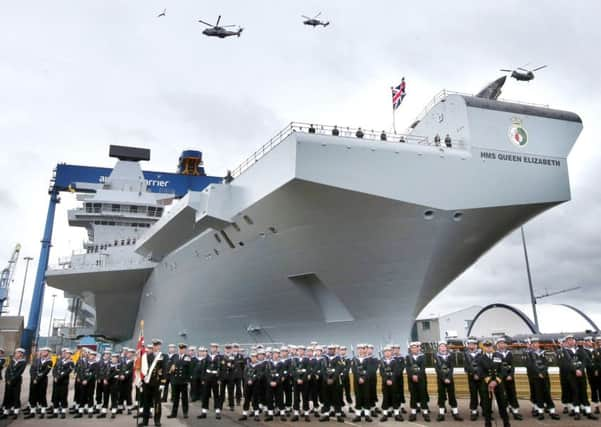Safety fears raised Royal Navy aircraft carriers' new fighter-jets


Falklands war hero Commander Nigel ‘Sharkey’ Ward has hit out at the use of the new F-35B Lightning II jet on the Royal Navy’s Queen Elizabeth-class supercarriers.
The veteran Harrier pilot – who shot down eight Argentine aircraft in the Falklands – claimed pilots of the new state-of-the-art jets would be ‘taking their lives in their hands’ if they flew off the decks of the new navy flagships.
Advertisement
Hide AdAdvertisement
Hide AdIn a report to the UK’s defence committee – which scrutinises the government’s armed forces policies – Cdr Ward said the jets would be unable to land safely on the carriers in bad weather.
But the concerns were last night swept aside by the Ministry of Defence, with officials saying they were ‘confident’ in both the new carriers and multibillion pound stealth jets.
A spokesman said: ‘There is no design anomaly in the Queen Elizabeth-class carriers, and the F-35B has been designed to operate from them in bad weather and heavy seas. We are confident that both platforms offer the best capability for our armed forces.’
The two new aircraft carriers – worth £6.2bn – will be based in Portsmouth with the first, HMS Queen Elizabeth, arriving later this year.
Advertisement
Hide AdAdvertisement
Hide AdIn Cdr Ward’s letter to the panel of MPs, he said there was ‘real danger to life and limb’ using the F-35B to conduct shipborne rolling vertical landings.
He claimed the jets had ‘no true vertical lift’ capability, instead relying on a short take-off and vertical landing method (STOVL).
He added that a new form of approach lights, which have been installed on the 65,000-tonne carriers to guide pilots back to the ship were flawed – particularly in rough seas and foul weather.
And he claimed when ships were ‘heaving’ in turbulent seas, pilots may end up following the up and down movement of the approach lighting – a ‘cardinal sin’ which could cause jets to crash.
Advertisement
Hide AdAdvertisement
Hide Ad‘Just wait until the real conditions are experienced at sea in bad weather, by night and in warmer climes,’ he said.
‘It is not exaggerating to state from experience that the F-35B flight operations from and to the deck will be hounded by flight safety considerations.’
BAE Systems, which is part of the team building the new aircraft carriers, said the F-35B and Queen Elizabeth-class of ships would be able to operate ‘across the range of conditions required’.